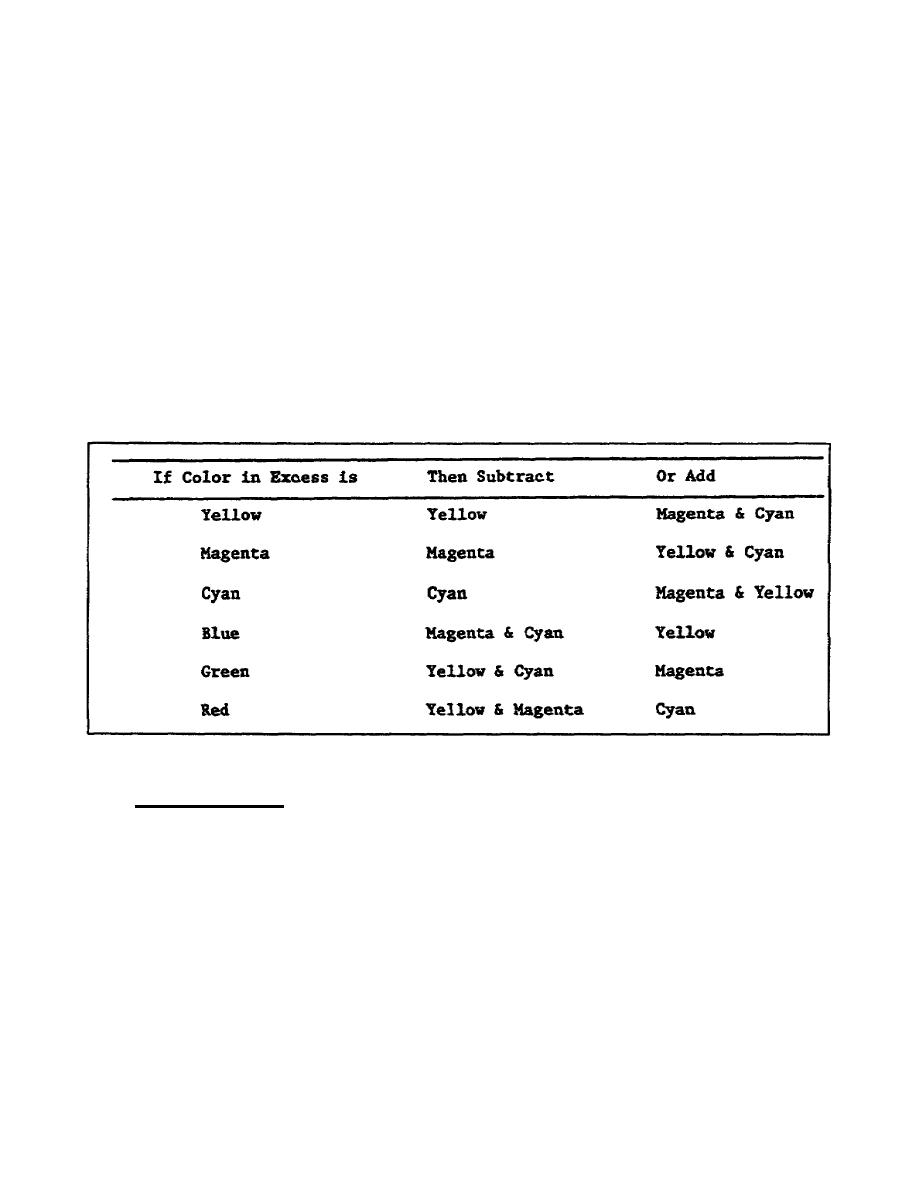
(3) Once the film has been processed, you are ready to determine
exposure and the filter pack adjustments that may be needed.
(a) First, select the test exposure that best duplicates that of
the original slide.
(b) Density can be determined visually or densitometrically.
(c) When doing this densitometrically, read out the density of the
gray card on the original slide on a transmission densitometer and record
it.
Then read the test exposures of the gray card until you find the
exposure that matches or nearly matches the original slide density reading.
c. Check for Color Balance. Once you have located a properly exposed
slide, you must check it for color balance. If the colors are in balance,
the test area will be a neutral gray image and no further testing is
necessary.
If, however, the image is anything other than gray, you first
have to determine what color is in excess and then correct your filter pack
according to the following recommendations shown in figure 6-3.
Figure 6-3.
Filter pack corrections
4.
Color Balancing.
a. Need for CC Filters.
The foregoing recommendations in figure 6-3
may be helpful to you but they do not tell how much filtration to add or
subtract.
This is where the use of color-compensating filters for visual
color evaluation come into play. You will need a complete set of CC filters
in graduated densities before you begin.
6-6
SS0514



 Previous Page
Previous Page
